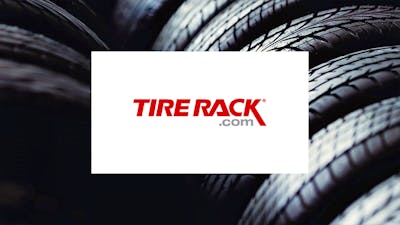Why Do Some Tires Have Tread on the Sidewall?
Crossover models with off-pavement capability are growing rapidly in our automotive market. Toyota’s RAV4 Hybrid Woodlands Edition, Mazda’s CX-50 Meridian, the Subaru Forester Wilderness, Outback Wilderness, Crosstrek Wilderness, Honda Pilot TrailSport, Nissan Pathfinder Rock Creek Edition, Kia Telluride X-Pro, and many other trims of many other crossover SUVs now feature tires rated for off-pavement trail use. Let’s look at an important design feature of these tires - Tread on the sidewall.
Get the Best Deals on Tires
What is a Trail Tire?
Newish to the crossover market are trail-rated tires. These tires are often all-season-rated and many now come stamped with the three-peak mountain snowflake indicating that they are rated for severe snow duty. Unlike all-terrain tires, which can look similar, trail tires offer a quiet, smooth highway ride and don't come with a meaningful fuel economy penalty. Manufacturers are fitting their off-pavement special trims with these tires, knowing that the owners will likely travel unimproved roads, logging roads, oceanside sandy trails, and dirt roads often leading to boat ramps, canoe and kayak launch points, and hiking trailheads.
Sidewall Reinforcement
The first thing to know about trail tires is that the sidewall is made more robustly than that of a touring or general-purpose all-season tire. It is more resistant to tearing and punctures. When traversing an off-pavement trail or dirt road, the sidewall is exposed to rocks, roots, and branches that can score or puncture the sidewall. Hence, they are made tougher.
What is Airing Down?
You may not realize it if you are not among those in the off-pavement community, but many owners of crossovers and SUVs reduce their tire pressure, known as “airing down,” when they travel in soft mud and sandy areas. If the vehicle manufacturer suggests a tire pressure of, let’s say, 30 psi for everyday use, those who travel off pavement may air down the tire pressure to 20 psi or so. They do this simply by letting air out of the Schrader valve on the tire. Some use a tool to make it quicker. When finished with their adventure, they use a portable 12-volt pump to put the air back in. Some trailheads offer compressed air for folks doing this as well.
The reasons for airing down are to increase the contact patch of the tire to the road and to soften the ride. When you air down, the tire’s surface contacting the ground becomes larger. With a normal sidewall, that added area is smooth rubber. With tires that have tread on the sidewall, that contact area has tread. By increasing the surface area in contact with the trail, the tire offers more grip and stability.
Tread on the Sidewall
There are multiple reasons why manufacturers put tread on a sidewall. These include added traction in mud, added traction in sand, grip in rocky areas, and aesthetics. We’ve already explained how airing down works. Basically, the tire becomes “larger.” This is helpful in soft, muddy or sandy areas, you want more tread on the increased surface area. In some off-pavement scenarios, deep ruts and grooves from natural causes and from vehicles that passed by earlier mean that the sidewall may be in contact with the roadway for short periods of time. The reinforced sidewall design with tread makes the tire an asset in this case.
Of course, sidewalls that can grip rocks are better than ones that can't. Although we are stretching a bit here, tread along the sides of a tire makes sense if you know ahead of time that area will be scraping or pulling itself along any sort of rocky road surface.
Proof Sidewall Tread Is Used
It’s easy to see how tread on a tire sidewall works. Simply drive on a muddy trail and then look at the tires after you have done so. The mud remains on the side of the tire where it came in contact with the muddy terrain. As our image shows, the mud contacts the sidewall much higher up than one might assume.
Does Sidewall Tread Actually Work?
We have tested many crossovers and SUVs equipped with trail tires from brands such as Falken and Yokohama, as well as all-terrain tires from Toyo, Goodyear, BFGoodrich, and others. There is no doubt the tires make a big difference in terms of grip and comfort. In addition, the community of vehicle owners who use their trail and all-terrain tires have proven that a robust sidewall design equipped with tread reduces flat tires due to sidewall tears.
If you own a crossover or SUV equipped with general-purpose all-season tires and wish to head off-pavement for some adventures, the very first thing to do is consider upgrading your tires to trail or all-terrain models. We have attached some links below to a variety of quality brands to get you started.
- Falken WildPeak A/T Trail Tires
- Yokohama GEOLANDAR A/T Tires
- Toyo Open Country R/T Trail Tires
- Goodyear Wrangler-Series Tires
- BFGoodrich All-Terrain Tires
- Continental TerrainContact A/T Tires
Read more on the Best Tire Deals available here.
See our overall recommendations for Best Tires
See our recommendations for the 10 Best Tire Brands for 2024













